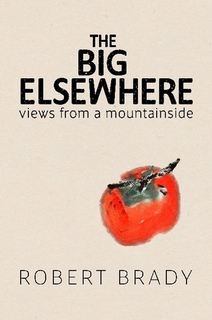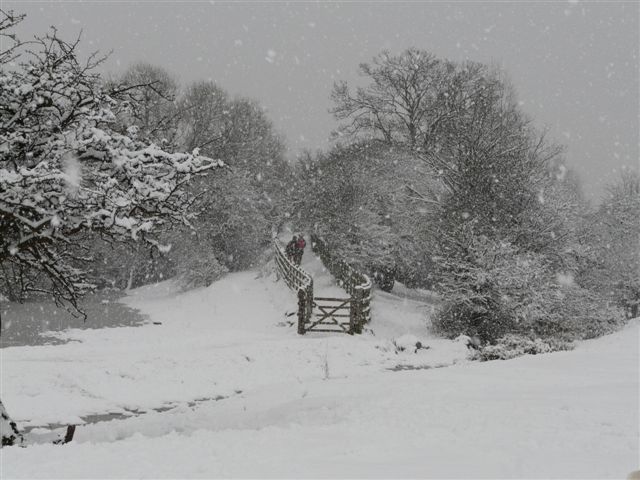 When Kyoto author Robert Brady decided that he had had enough of urban living, he moved out to land in the Shiga countryside with views of Lake Biwa. There was a small cabin there which could be replaced by something more substantial, and as is the way in Japan before beginning a new construction, arrangements had to be made for a ‘jichinsai’ (ground-breaking ceremony).
When Kyoto author Robert Brady decided that he had had enough of urban living, he moved out to land in the Shiga countryside with views of Lake Biwa. There was a small cabin there which could be replaced by something more substantial, and as is the way in Japan before beginning a new construction, arrangements had to be made for a ‘jichinsai’ (ground-breaking ceremony).
The idea of the ceremony is to pacify the earth spirits so that they will not vent their anger on those who disrupt the land. A temporary altar is set up with offerings for the kami, and prayers are directed towards the safety of those doing the construction and those who will use the building. At the centre of the ceremony is a pile of sand representing the land, which is symbolically broken.
The passage below about a rather special jichinsai comes from Robert Brady’s evocative collection of pieces about life in the Japanese countryside entitled The Big Elsewhere (see here). As Ken Rodgers puts it in the Introduction, Brady teaches us about reconnecting with nature, with the life-source. For Shinto lovers, it’s a deeply inspiring book.
*******************
Grand view of the lake
from the window
with the frog on it
The local Shinto priest proposed February first or fourth as auspicious days for the Jichinsai ceremony of blessing the land on which the house is to be built. We chose the former date, the ceremony to be held at one o’clock in the afternoon; the priest had stipulated that it shouldn’t be raining or snowing.
On the day, we in Kyoto received a phone call from the priest at about 7 am; he said that it was snowing only lightly in Shiga and it seemed ok; was everything in progress? We told him it was. When we got to the village at about noon, having left Kyoto at around 9:30 and taken the long route around because of snow in the mountain passes (we only had two-wheel drive, automatic, useless in more than light snow). As soon as we turned off route 161 onto the mountain road up to the land, we encountered about 25~30cm of snow, mostly slush lower down but becoming pure and untraveled by the time we reached the school.
We tried to go up the slope beyond, but our wheels slithered and slid, so we left the van at the roadside and unloaded the god-goodies we’d picked up in small towns along the way. These included a large bottle of high-class local sake, long green onions, peppers, carrots, pumpkin, rice, salt, tomatoes, cucumbers, cabbage, nori, dried squid and strawberries. Gods love this stuff.
We lugged it all up the rest of the way through fallen and falling white silence, a grand, magnified stillness, the mountains impressive in their ermine robes. When we got to the tunnel beneath the highway, I noted that no vehicles had been by in the past hour or two; it was now afternoon. I left Echo in the tunnel with the godgoods, out of the steadily thickening snowfall, and went up the rest of the way to see if anyone was at the site. Nobody but snow, about 50cm deep, perfect for snowballs, which I personally confirmed for some time.
Later on, standing in the tunnel, we figured that the priest must have cancelled and maybe we should go back down to the village and call him, when a small, spiffy and obviously 4WD van came purling up the road over the drifts. It was the priest. He stopped in the tunnel. We talked. He was strongly in favor of no Jichinsai today, since the snow was falling in heavily anticeremonial fashion. Echo said that the architect, the contractor and the materials man were already on their way, some from quite far, and it was too late now to call it off, so could he just do something simple maybe. He said ok, chugged on up. It would just be the three of us then, I figured, assuming that the others must have turned back by now; they’d have to be crazy to come out here in this, like me and Echo and the priest.
When we got to the place, the snow was falling in big white feathers, softly onto a down of silence; every once in a while there was a muffled thump as pillows of snow avalanched from the bending cedars. The priest opened his van and took out snow shovels, gave me one, marked out a circle in the snow; he and I began to dig. The ceremony had to be held on bare ground: the earth connection was essential. Still, with the snow falling like this I didn’t have much hope for an earth connection of any magnitude; the snow was already piling up on the priest’s shoulders. He wore white cotton robes with a brown vest and a high woolen hat. Out in the air the Lake was invisible; nothing but a blur of whiteness out there: what a clear-day sight it would be from the front windows!
After we’d dug out a circle that right away began filling with snow, the priest began to unload the ceremonial paraphernalia. First the high wooden altars, which he set up so that he would face north in the center of the circle. The altars were quickly covered with snow, which Echo brushed off every now and then to make room for the next centimeter. Then out came the altar dishes, onto which went salt and rice, and the bigger dishes to hold the carrots, peppers, eggplants, onions, pumpkins, dried squid, seaweed, strawberries etc., then the sacred flasks, into which went the sake. All were soon covered in snow.
While all this was under way, up from out of the white dimness came the contractor, carrying four wooden stakes, a heavy sackful of something, and two bottles of sake; and knowing exactly what to do. The priest pointed to a place on the ground beside the altar and the contractor emptied the sack there: instant sacred sandpile. Then he proceeded to drive the stakes into the ground at four points on the edge of the circle, marking off a square inside the circle. To these stakes he tied the bamboo fronds the priest had put out earlier; to these fronds he led rice-straw rope around the square; the architect, who had also emerged from the whiteness, brought two more bottles of sake, which he put on the altar. He then began to hang shide (strips of white cut-and-folded paper), also prepared earlier by the priest, from between the strands of the ropes, all these little adjustments soon comprising a most impressive ceremonial forest chapel.
All this while, the sky was a thick whiteness. The snow was falling harder and harder as we stood there while the priest, under cover of the back door of his van, donned his red crane-covered gray silk ceremonial robes (it was painful to think of them getting snowed all over), donned his tall lacquered wicker hat, took his wooden ceremonial wand in hand, stepped out into the circle to begin the ceremony, and the snow stopped, the clouds in one part of the sky separating into a little blue circle as the sun shone full down upon the scene. I swear to this. I said to myself: This guy’s got connections.
Then began the ceremony, the priest moving crisply in ritual, each motion part of a complex cosmic hypermetacosmogeometry, he all the while reciting incantations in a soft monotone that slowly grew in power until he was shouting at more than full voice into the sunny silence of the trees; then, taking out from his robes a large folded parchment, he began to read what sounded like a list of all the gods he was invoking, the list going on and on, when somewhere in the middle of it I was startled to hear my own name, and that of my wife; some sort of cosmic petition.
About this time another car came out of the whiteness and parked with a blast of the horn at the roadside. It was the materials man. He trudged on up through the deep snow just as the priest had blessed all the things on the altar and was beginning to lead us through our portions of the ritual: the architect took the ceremonial scythe and made three rice-stalk-cutting motions above the pile of sand; then I used the ceremonial spade to dig three spadefuls of sand; then Echo did the same; then the materials man; then the contractor dug a hole in the top of the pile with the ceremonial paddy hoe and buried the small box (wrapped in white paper with an inscription on it) the priest had placed in the hole.
The priest then did some more incanting, which led to a reversal of the long howl that had summoned forth the gods and now, in reverse, sent them back to their places pleased with good words and a fine repast, and ended the ceremony. He dug up the little box and gave it to the contractor, told him that before construction he should bury the box under what would be the northwestern corner of the house. He then stepped out of the circle and the sun went in, the sky got dark, and it began to snow heavily again. I swear to this too.
And so it continued to do the rest of the time we were there. The word ‘miracle’ was heard among us. Afterward we all had a cup of the holyized sake and Echo divided the vegetables between us and the priest. We got the dried squid, he got the strawberries. All then set off down the mountain in the vehicles, but I preferred to walk, to be alone in this vast action of snow, this immense white silence, every step a splendid one.
Part of the way down I heard, as crisply as though directed to me by the snowflakes and heightened by their lacy quiet, from the soul of the whiteness the call of the hawk, arrowing out through the endless powder of the sky. There was no answer but a gentle falling everywhere.
*
One stillness high
in the snowstorm—hawk
riding the howl


Brave, to perform Jichinsai in heavy snow fall. Thanks for the report. But when reading in $14: “while reciting incantations in cup of the holyized sake” I feel rather confused. It seems that the text is corrupted and is in need of some editing.
Thank you for your expert eye on reading through the text, Paul. I will go back and check the original. (It’s worth noting here that Paul is a Shinto priest operating out of Amsterdam, with experience in conducting many jichinsai across Europe.)
Thanks, have now rectified the passage…